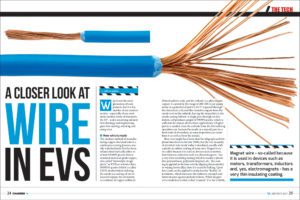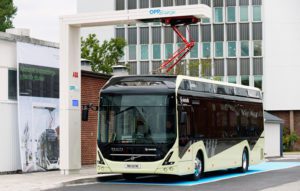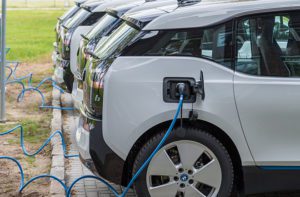We read a lot about the performance and environmental advantages of EVs, but there’s another benefit of electrification that’s less often discussed: increasing grid resilience and “energy democracy.” The advantages of a more distributed electrical grid are especially relevant in light of the massive power outages caused by the recent hurricanes. A new report from… Read more »
Search Results Found For: "second life"
A closer look at wire in EVs
Wire is not the most glamorous of components, but it is the enabler of our modern society – especially of our even more modern mode of transport, the EV – and a surprising amount of technology and engineering goes into making, selecting and using wire. How wire is made The modern method of manufacturing copper… Read more »
Proterra and LG Chem co-develop new battery cell
Electric bus builder Proterra and Korean battery giant LG Chem have partnered to develop a battery cell optimized for the heavy-duty vehicle market. The cell chemistry has been optimized for maximum energy throughput, charge rate acceptance and energy density. Proterra claims its Catalyst E2 bus, introduced last year, offers the longest range of any electric… Read more »
Federal Low-No Vehicle program awards $55 million in grants for transit buses and infrastructure
The DOT’s Federal Transit Administration (FTA) has announced $55 million in grants to local transit agencies through the Low or No Emission (Low-No) Vehicle program. Fifty-one projects in 39 states will receive funding. One recipient is the Pinellas Suncoast Transit Authority (PSTA), in Charged’s home town of St Petersburg, Florida. PSTA will receive $1,000,000 to… Read more »
Flying electric: Both startups and industry giants push ahead with electric airplanes
In the popular imagination, aviation represents the last frontier for electrification. Considering the weight and limited range of batteries, an electric airplane might seem practically impossible. However, while electric long-haul airliners probably lie pretty far in the future, the fact is that, in some applications, the technical obstacles to electrified aircraft are not as formidable… Read more »
DOE awards $6 million to first crop of Battery500 Seedlings
The Battery500 consortium, led by the DOE’s Pacific Northwest National Laboratory (PNNL), intends to build a battery pack with a specific energy of 500 Wh/kg, which would more than double the 170-200 Wh/kg per kilogram in today’s typical EV battery. Part of the initiative is the “Seedling” program, which identifies new and risky battery research… Read more »
DOE awarding $19 million to 22 advanced vehicle technologies projects
The DOE is awarding $19.4 million to 22 new cost-shared research projects in the fields of advanced batteries, lightweight materials, emission control, and energy-efficient mobility systems. Fifteen of these are Phase 1 Battery Seedling projects, aimed at battery materials and approaches that complement the Battery500 Consortium’s research. Promising Phase 1 awardees will be competitively weeded… Read more »
PG&E, BMW release findings from V2G pilot
Pacific Gas & Electric and BMW worked together on a pilot vehicle-to-grid program from July 2015 to December 2016. The iChargeForward program was designed to test the ability of EVs to support the electric grid through smart charging and demand response. The companies have now released the results of the pilot, which they say successfully… Read more »
New study finds V2G discharging harmful to EV batteries
Vehicle-to-grid (V2G) technology is seen as a potentially valuable resource for balancing electrical grids and facilitating the use of renewable energy. However, a new study by a team at the University of Hawaii suggests that the additional cycling to discharge vehicle batteries to the grid is detrimental to battery performance. In “Durability and reliability of… Read more »
EV tech explained: Why do EVs restrict the amount of battery capacity that can be used for driving?
All EVs that use lithium-ion batteries are designed so that their full capacity can’t be used in driving – a few kWh are always left over as a buffer. Sometimes you’ll find this figure in spec sheets, which might (for example) quote capacity as “60 kWh (55 usable)” or some such. What is the reason… Read more »













